HPV
_ are a group of non-enveloped icosahedral circular double-stranded DNA (dsDNA).
naked statue, round table, blue color 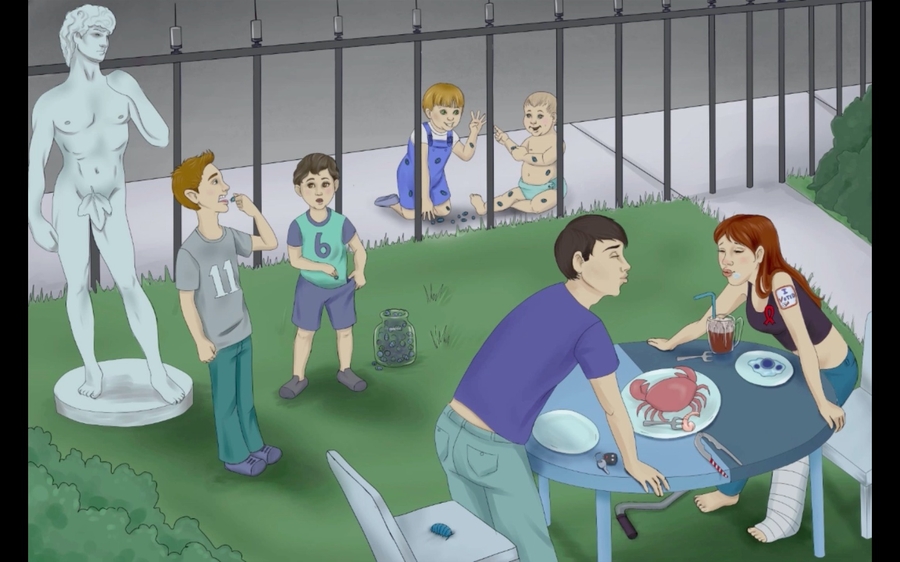
_Clinically presents acutely as warts or chronically as carcinomas (cervical, squamous cell, laryngeal)**.
HPV 1-4
_HPV 1 causes plantar warts, while HPV 2 through 4 cause verruca vulgaris (common skin warts). 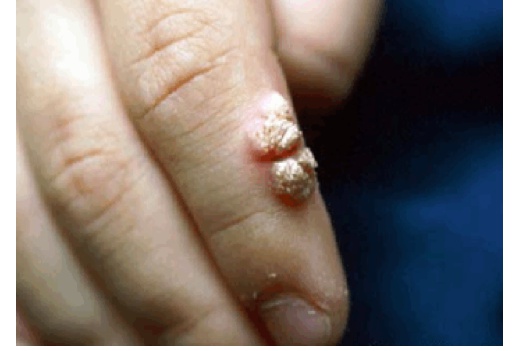 kids 1 and 4 fingers playing outside
kids 1 and 4 fingers playing outside

HPV 6 and 11
_Cause condyloma acuminata (genital warts) and laryngeal papillomas in children. Laryngeal papillomas can cause airway swelling, hoarseness, and secondary bacterial pneumonia.
Kids: 1 in the mouth, 1 in the pants 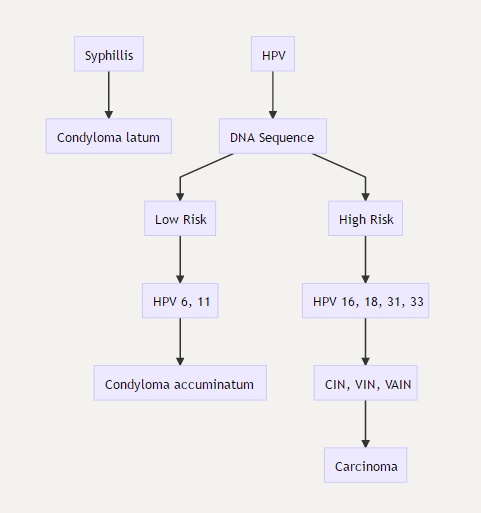
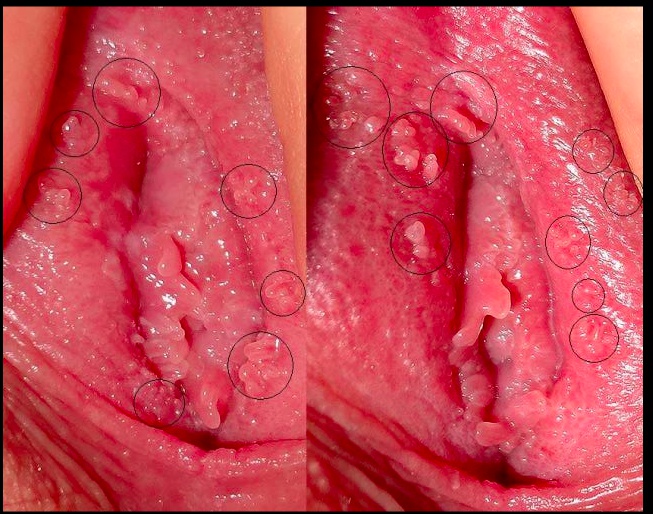
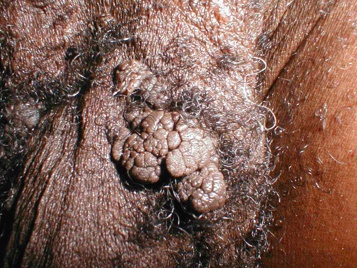
HPV 16 and 18
_Are associated with intraepithelial neoplasia and anogenital carcinoma of the uterine cervix, penis, and anus (HPV-16 and 18 together account for 70% of cervical cancers). Note that HPV-16 and HPV-18 are also responsible for squamous cell carcinoma of the head and neck. 
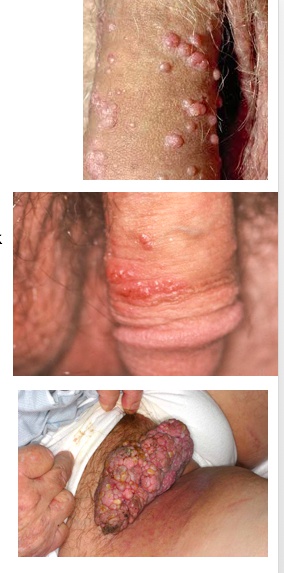
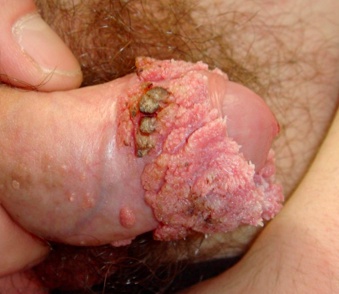
_Transmission occurs by direct and indirect contact (skin and sexual contact). HPV infects squamous epithelial cells in epidermis or mucous membranes causing a lysogenic and lytic cycle.
Lysogenic cycle
_In the lysogenic cycle, HPV infects basal cells and attempt to replicate. Basal cell environment disfavors viral replication. This promotes benign basal cell proliferation causing cell growth and vacuolization that clinically manifests as warts.
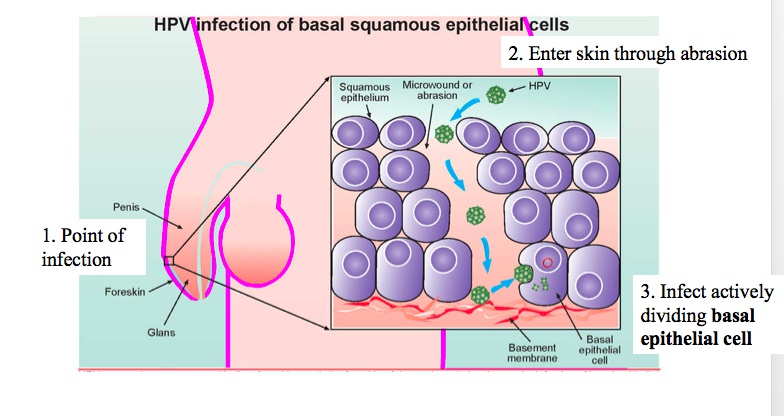
As the host cell undergoes the normal differentiation, the virus undergoes different parts of its life cycle. When the virus initially enters host basal cells, it cannot replicate until the cell matures into a keratinocyte. The virus has to wait until mitosis occurs in order to use the host's replication machinery.
Lytic cycle
_Characterized by release of viral progeny and requires terminal differentiation of stratified epithelium. For this reason, the lytic cycle usually occurs in upper spinous layer of epithelium. The keratinized cell environment favors viral replication, which allows for viral DNA replication and assembly. Vacuolization of the cytoplasm eventually causes lysis of the host cell, and viral particles are released for further infection. 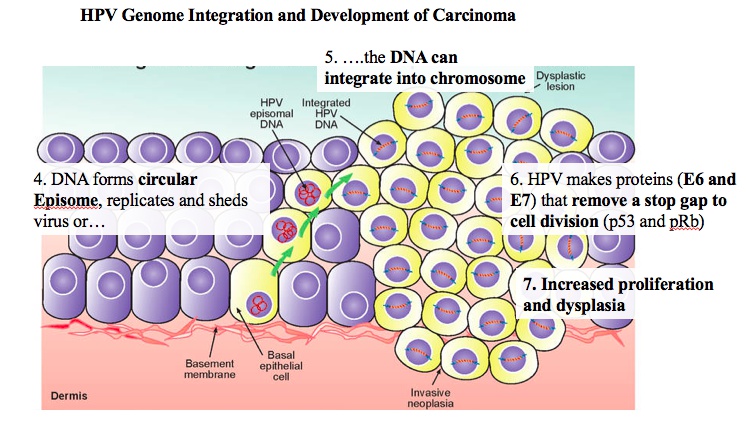
_HPV 16 and HPV 18 have two viral oncoproteins:
E6, which inhibits the function of p53
E7, which inhibits the function of Rb
Loss of p53 and Rb allow for cell cycle progression in the presence of DNA damage, thereby increasing the likelihood of tumorigenesis.
The virus expresses the early proteins--E6, and E7--in the lower spinous layers (earlier in the infection). Normally, as epithelial cells mature, the cell cycle is halted as part of forming a protective barrier; however, terminal differentiation is hindered by E7 and E6. This has most likely evolved to allow the host cell to continue to reproduce viruses.
_If there is significant DNA damage, p53 stimulates production of p21. p21 binds and inhibits all cyclin-CDK complexes causing arrest of cell cycle until DNA damage is repaired. Mutations in p53 are associated with most cancers.
_The hypophosphorylated Rb inhibits E2F activity and G1-to-S progression. Loss of function Rb mutations are associated with Retinoblastoma and Osteosarcoma.The activated Cyclin D-CDK4/6 complex phosphorylates Rb tumor suppressor gene. Phosphorylated Rb releases E2F transcription factor. E2F activates its target genes, including Cyclin D and other Cyclins (E and A), which are needed for progression of the cell cycle.
Treatment
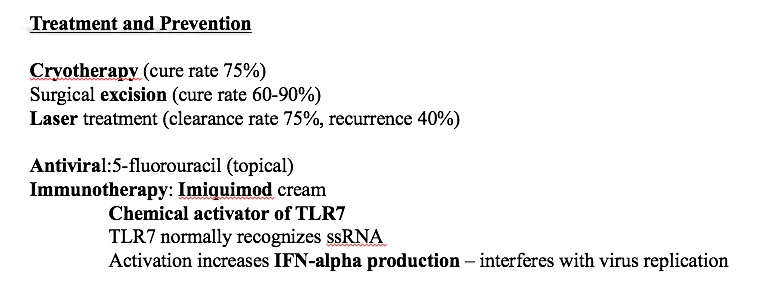
Last updated
Was this helpful?